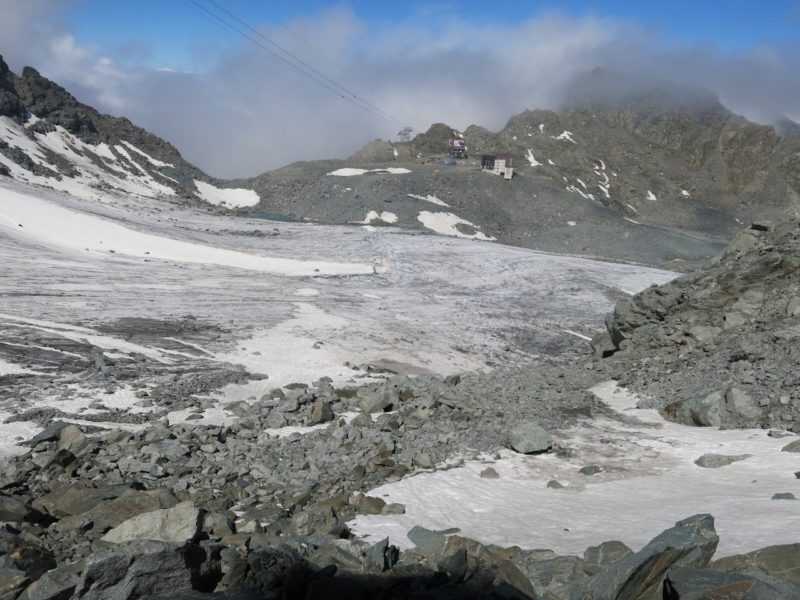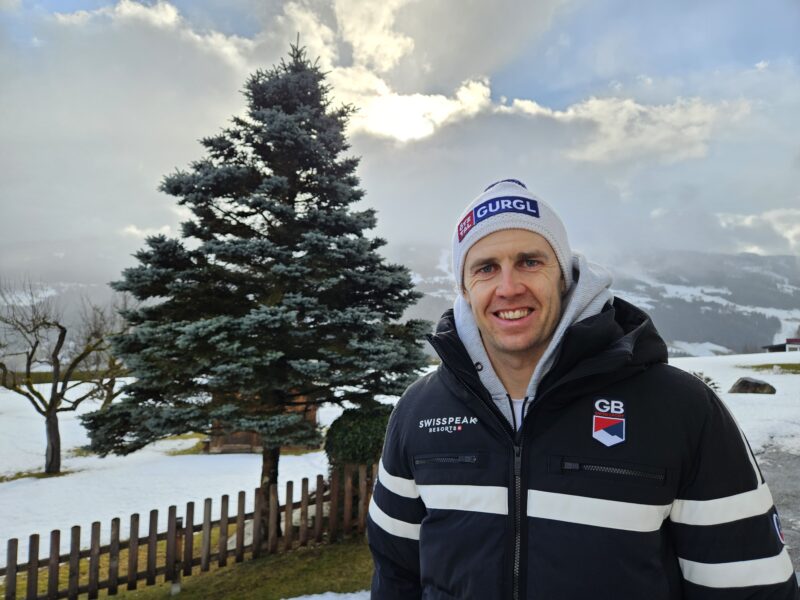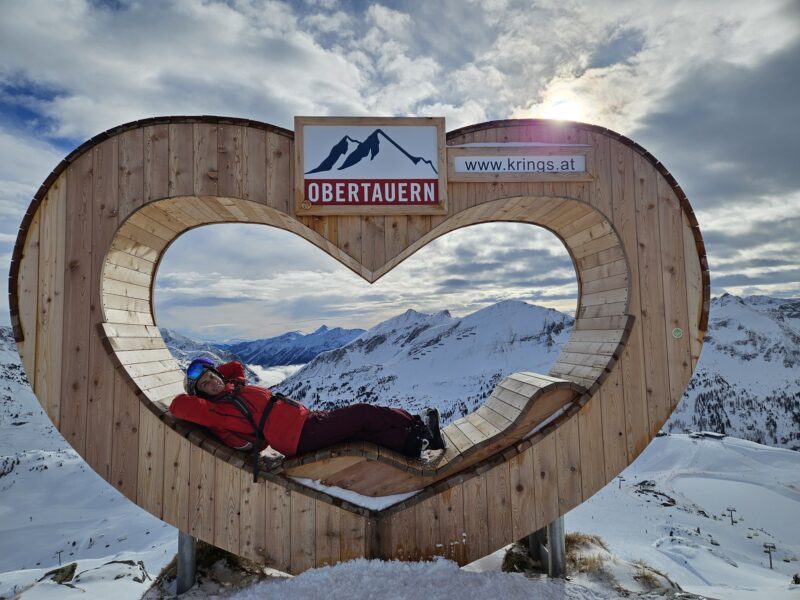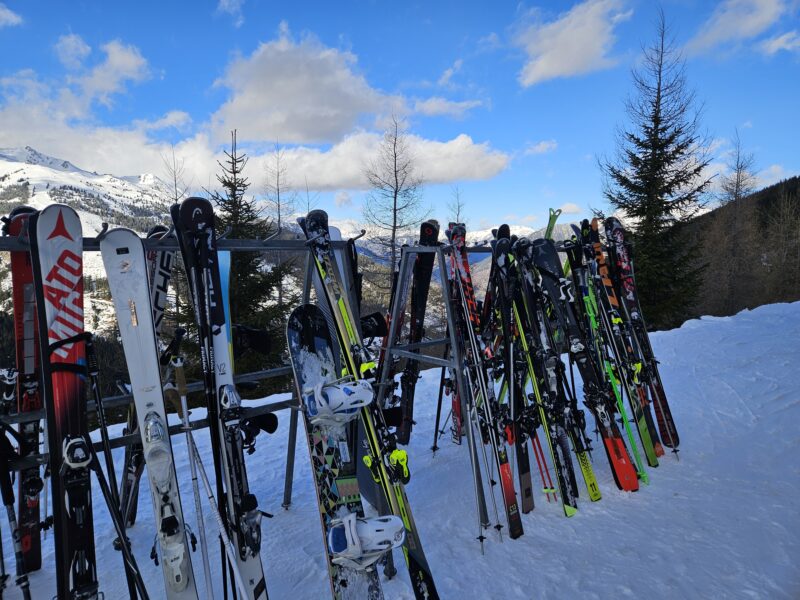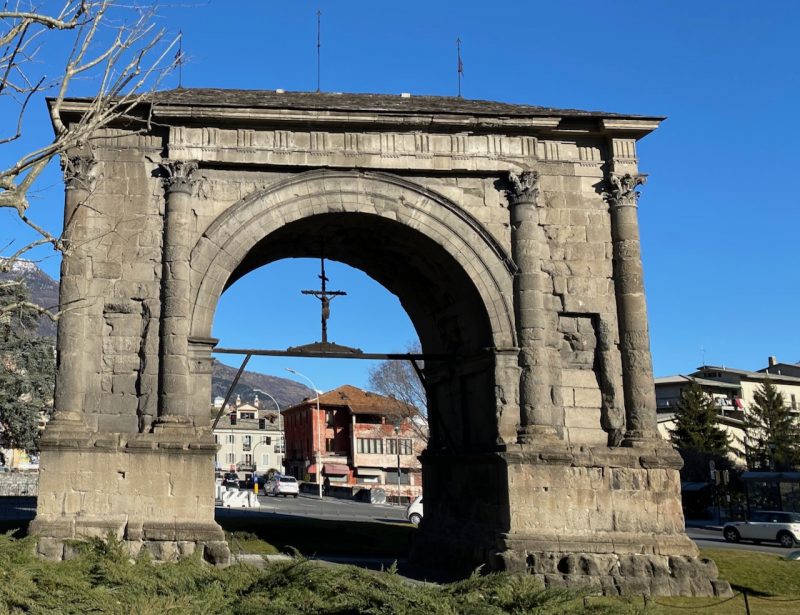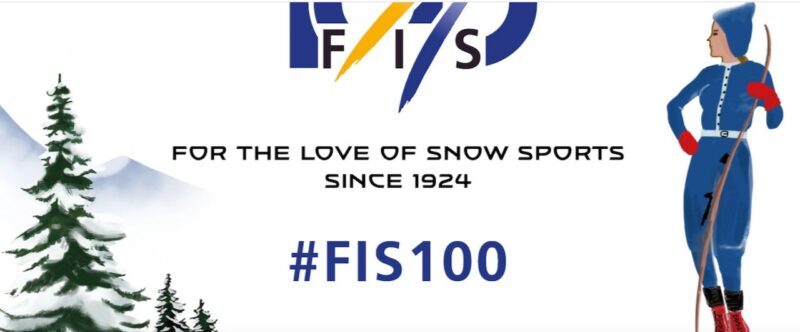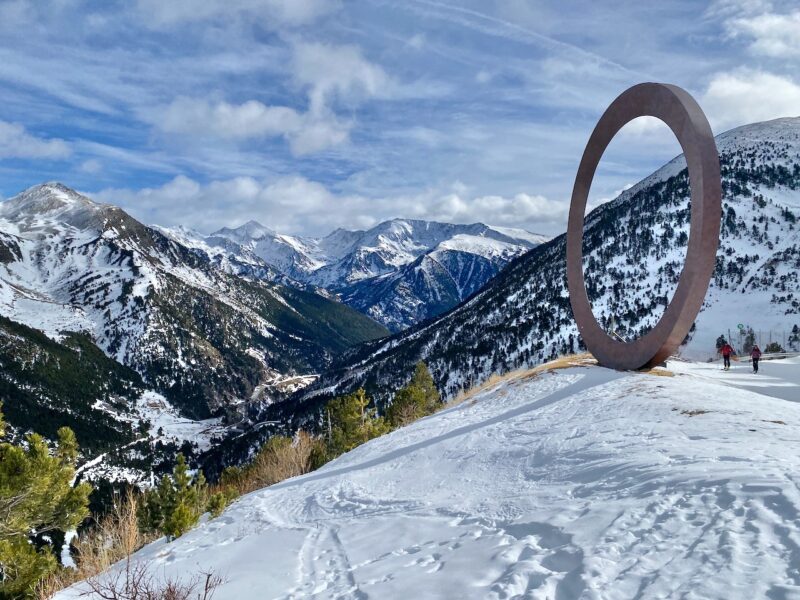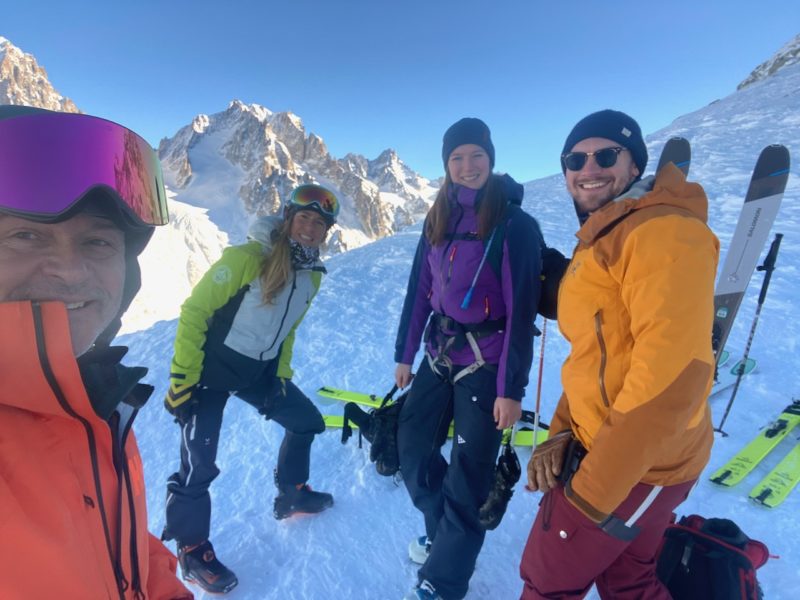The Winter Olympics: Freestyle Explained
4th February 2022 | Gaz Vogan, Beijing
Last modified on February 8th, 2022
The 2022 Winter Olympics are finally here and the UK’s Gaz Vogan is one of 10 judges whose scores will determine who is crowned Olympic Champion in the freestyle snowboard events. In part two of his exclusive account from Beijing for PlanetSKI he explains how they judge the riders.
In part one of my story from Beijing, I reported on the atmosphere here and the joys and sacrifices involved in being an international snowboard judge.
Now with the Slopestyle competition about to begin it’s time to explain a bit about how we score the runs in the three events of Slopestyle, Big Air and Halfpipe.
The same principles apply for both snowboard and freeski, so whichever you’re into, this will hopefully give you an insight into how the judging is done.
Judging at the Olympics
In one sense it is the same as any other competition.
We watch all the training days so we know what to expect. This is particularly crucial in Slopestyle when we have such an incredible course that we want to be aware of all the different lines and possibilities, so we can accurately and fairly score the tricks.

Gaz Vogan at the Beijing 2022 Slopestyle course – photo © Gaz Vogan
The last thing we want is to be caught out by something in competition that we weren’t aware of, and don’t have the space in our scoring scale to properly reward it.
What’s different is there’s a lot more pressure on us here than at any other competition.
That was instantly clear in the first Slopestyle Team Captains Meeting, with more questions than usual from coaches so they could understand what our stance was on certain features in the slopestyle course.
Slopestyle at Beijing
For the Slopestyle, we are using a section-by-section judging system with all 10 judges separated into smaller judging teams to focus on specific features of the course.
We then give individual scores for each section, with 3 of the judges still evaluating the entire run from top to bottom.
It’s a great system because we can dive into the detail of the specific tricks, and the riders, coaches and spectators can see how the tricks were rewarded during the run.
Previously if a rider got a score of a 76 (out of 100), they may not have known what they needed to do to improve their run.
But with the section-by-section system, they can see the 76 and then see that in section 4 they received only a 4.5 (out of 10) for example, and that was the weak-point in their run.
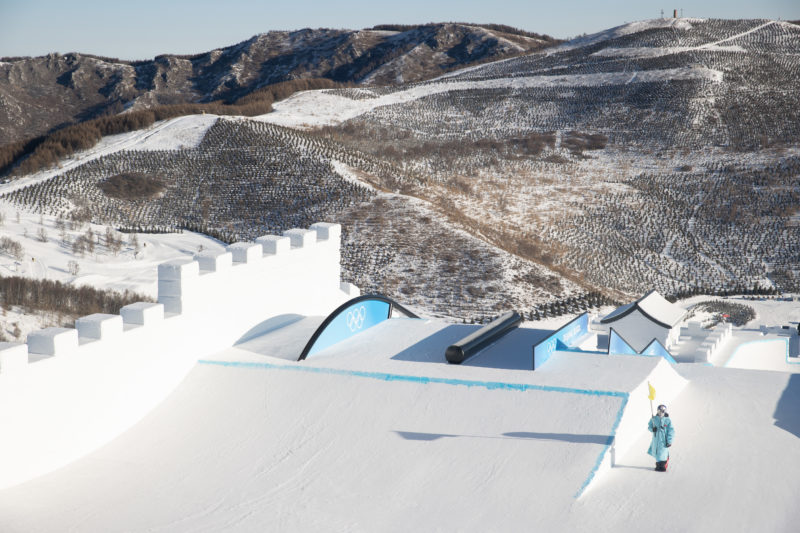
Part of the Slopestyle course at Beijing 2022 – photo © Sam Mellish/Team GB.
Halfpipe & Big Air at Beijing
Here we will score the entire run, but we do add additional scores that the TV production team use to create the on-screen graphics.
When the athlete is in the finish area and their score comes in – you’ll see 4 circles that show how we evaluated their run.
In Halfpipe the criteria are based on DAVE (Difficulty, Amplitude, Variety, Execution) whilst in Big Air it’s DEAL (Difficulty, Execution, Amplitude, Landing).
We give a value for each criteria out of 10 to show how much we rewarded (or didn’t reward) the athlete.
It’s not actually part of the actual score, it’s just there as a guideline for spectators.
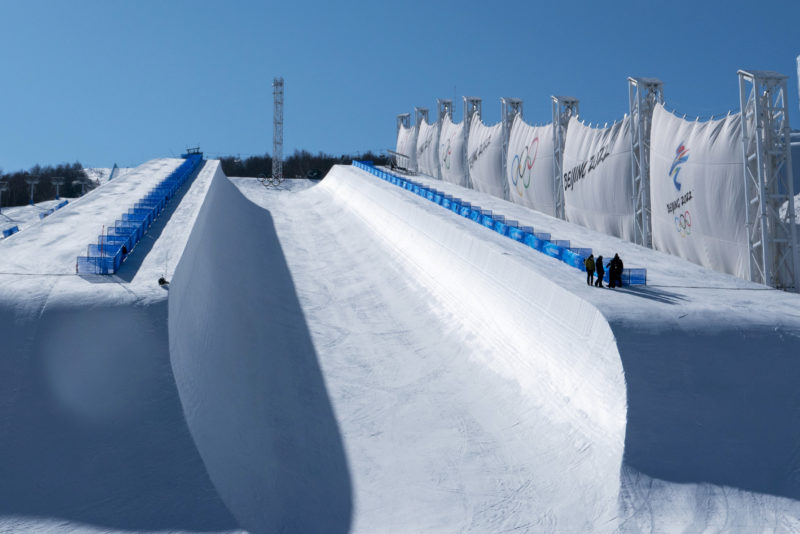
The Beijing 2022 Halfpipe – photo © Sam Mellish/Team GB
The Specifics of Judging
The job of a snowboard judge is effectively to evaluate each run of a competition, compare it to the rest of the runs and give it a score between 0 and 100.
The criteria we take into account are those mentioned above, along with a few others:
- Difficulty
- Execution
- Amplitude
- Variety
- Progression
- Risk
Difficulty
When we consider difficulty, we’re looking at the number of rotations, the axis used, the grab and the rail or jump the trick is done on.
Some tricks are inherently more difficult than others – a backside 1800 (which involves 5 full horizontal rotations) is more difficult than a backside 1440 (4 horizontal rotations).
That’s just a fact – but the tricky bit comes in when we compare the difficulty of different tricks – a frontside 1440 versus a backside 1440.
The level of rotation is the same, and some of it comes down to rider preference.
But for this comparison, we’d class the frontside 1440 as the more difficult trick because the rider is blind as they’re coming into land, which makes the trick harder and more risky.
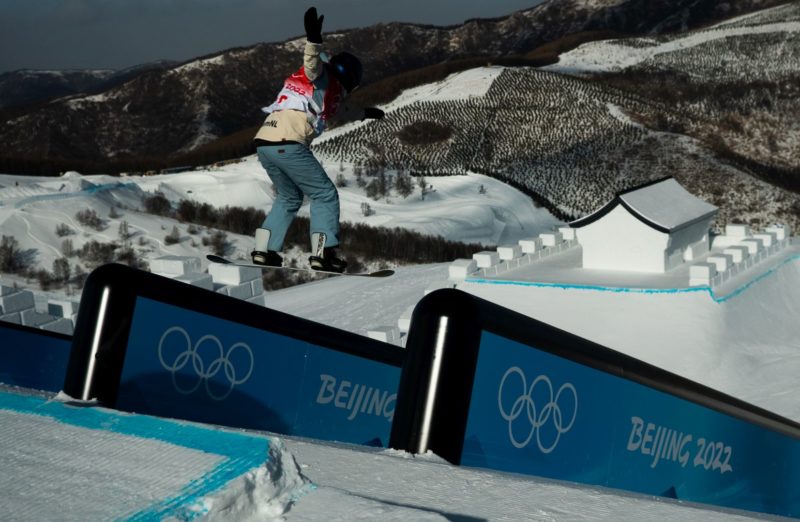
Slopestyle training at Beijing 2022 – photo © Gaz Vogan
Execution
What prevents snowboarding from just being a pure spin-to-win competition, is the execution criteria.
By “execution” we simply mean “how well the trick is done”. This can be a positive or a negative criteria.
If the rider shows great control of the trick, holds and tweaks the grab for the majority of the rotation and lands it perfectly, we would say that is great execution as it separates it from the “typical” version of the trick.
Bad execution would be a very short grab, the rider being unstable in the air and over or under rotating the trick when they come into land.
Good execution is critical in snowboarding nowadays, because all the riders are doing the hardest possible tricks.
With this, a well executed 1440 could beat a poorly executed 1800 (if we just compare the 1 trick).
Amplitude
This is our evaluation of how big the rider went, either on the kickers (jumps) or in the pipe.
In Slopestyle and Big Air, amplitude is great to see – partly because it gives the rider more time in the air and allows them to show greater control of the trick.

Beijing 2022 Big Air venue – photo David Pearce © Team GB/Copyright 2022
We look at the trajectory of the rider’s trick and whether they correctly initiated the trick.
In the Halfpipe, amplitude increases trick difficulty, so it’s a very important criteria – and a run that doesn’t have any amplitude won’t be in consideration for those podium positions.
To have good amplitude in the halfpipe, you have to show great board control and the ability to ride transitions.
It’s easy to do a 540 2ft out the top of the pipe, but much harder to do it 22ft out, so even though the degree of rotation is the same, we reward the amplitude.
Similarly, we want to see good amplitude consistently down the pipe and not just a single big hit at the start, as this shows good control and well executed take-offs and landings to maintain that amplitude.
Variety
When we judge using Overall Impression (in Halfpipe and Slopestyle), variety is a big consideration.
We’re looking at whether the rider spun in different rotational directions (clockwise and anti-clockwise), whether they used different grabs in their run and if they used different trick families, particularly on the rails.
In the Halfpipe we also consider whether the rider spun both up and down the pipe and the balance between toe-side and heel-side take-offs.
Progression & Risk
The above are our “major” criteria that are most frequently considered – but we also look at the progression of a rider’s run (or trick) and the risk involved.
Does it feature new and progressive tricks that haven’t been done before?
Or maybe a trick that has been done before but this one is on a new axis or with a new tweak or style.
Style is important for us. We want to reward good snowboarding and not see the sport turn into an aerials or gymnastic version.
The level of riding in snowboarding has increased significantly in the past few seasons, and the riders are getting so good at consistently putting down mind-blowing tricks, that we’re often analysing the tiniest details during tricks to be able to separate them.

Snowboard judges at a World Cup competition – © Gaz Vogan
We do have access to replays but we don’t use them often as the TV broadcasters want us to give our scores ASAP so they can get the graphics up.
We tend to get between 15 and 20 seconds to give our score, though on super-tight decisions we might take a moment to check something on the replay.
It helps that as judges we spend a lot of our down-time, both in the season and in the off-season, watching snowboarding, so we’re able to immediately recognise the trick and then zone in on the intricate mechanics and details of it so we can effectively reward the riders when they’re doing well.
Judging is a high-pressure job but a great privilege and never more so than at the Winter Olympics.
The scores we give will decide who makes a final, who gets a medal and, ultimately, who becomes the next Olympic Champion.

Gaz Vogan in Beijing for the 2022 Winter Olympics – photo © Gaz Vogan
*The only Briton competing in the freestyle snowboard events is Katie Ormerod. She goes in the women’s Slopestyle qualification in the early hours (in Europe) of Saturday 5th February and in the Big Air qualification on Monday 14th February.
If you want to know more about the behind-the-scenes stories from competitions, head over to gazvogan.com where I’ve started to publish various blog articles about my travels. Over on Instagram (@gazvogan) I’ll be publishing plenty of content from the training days and the whole Olympic experience, so definitely check that out. If you want to know more – then drop me a DM on Instagram!
MAIN PHOTO: GB’s Katie Ormerod, Snowboard Slopestyle training © Sam Mellish / Team GB

